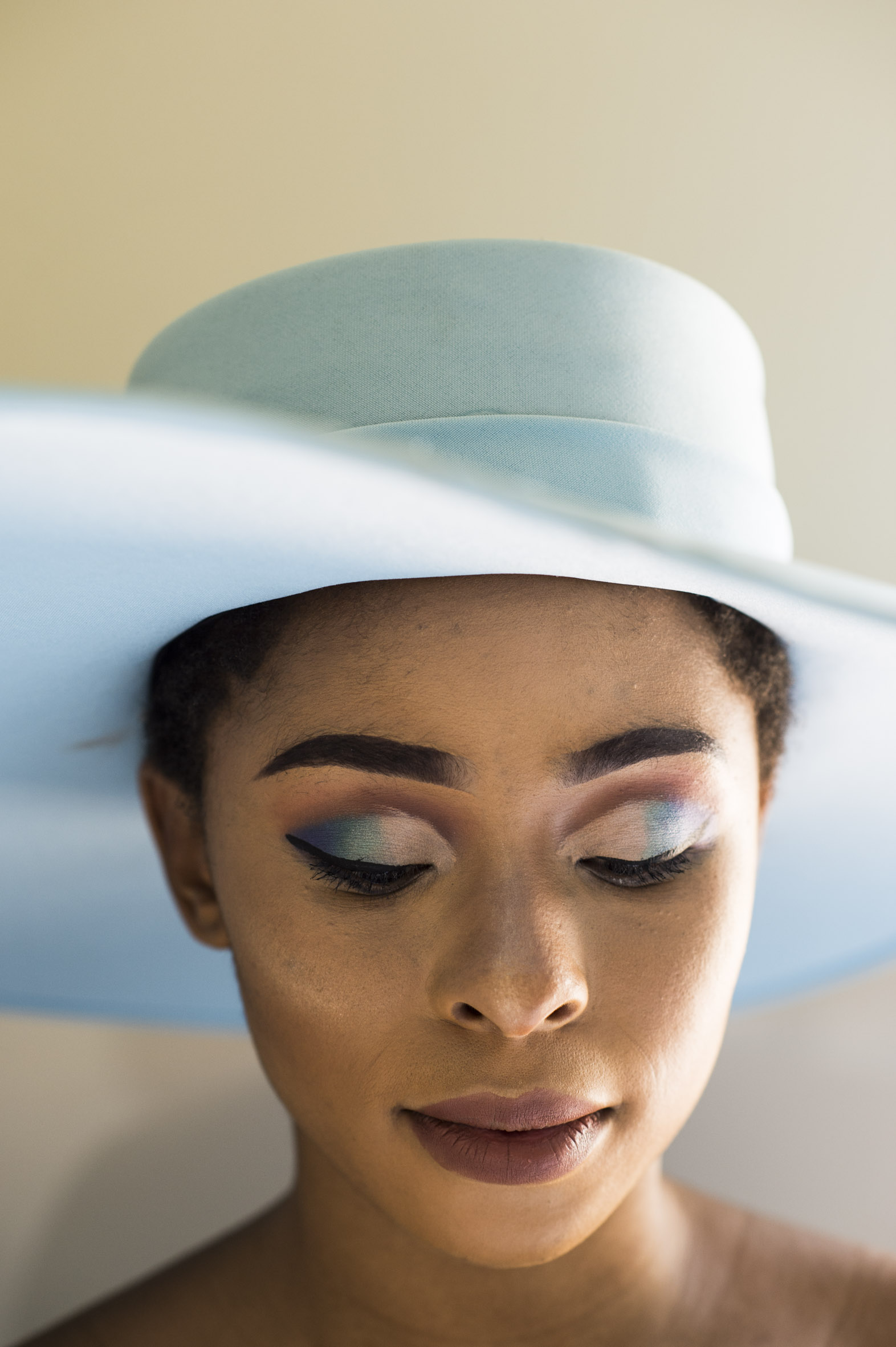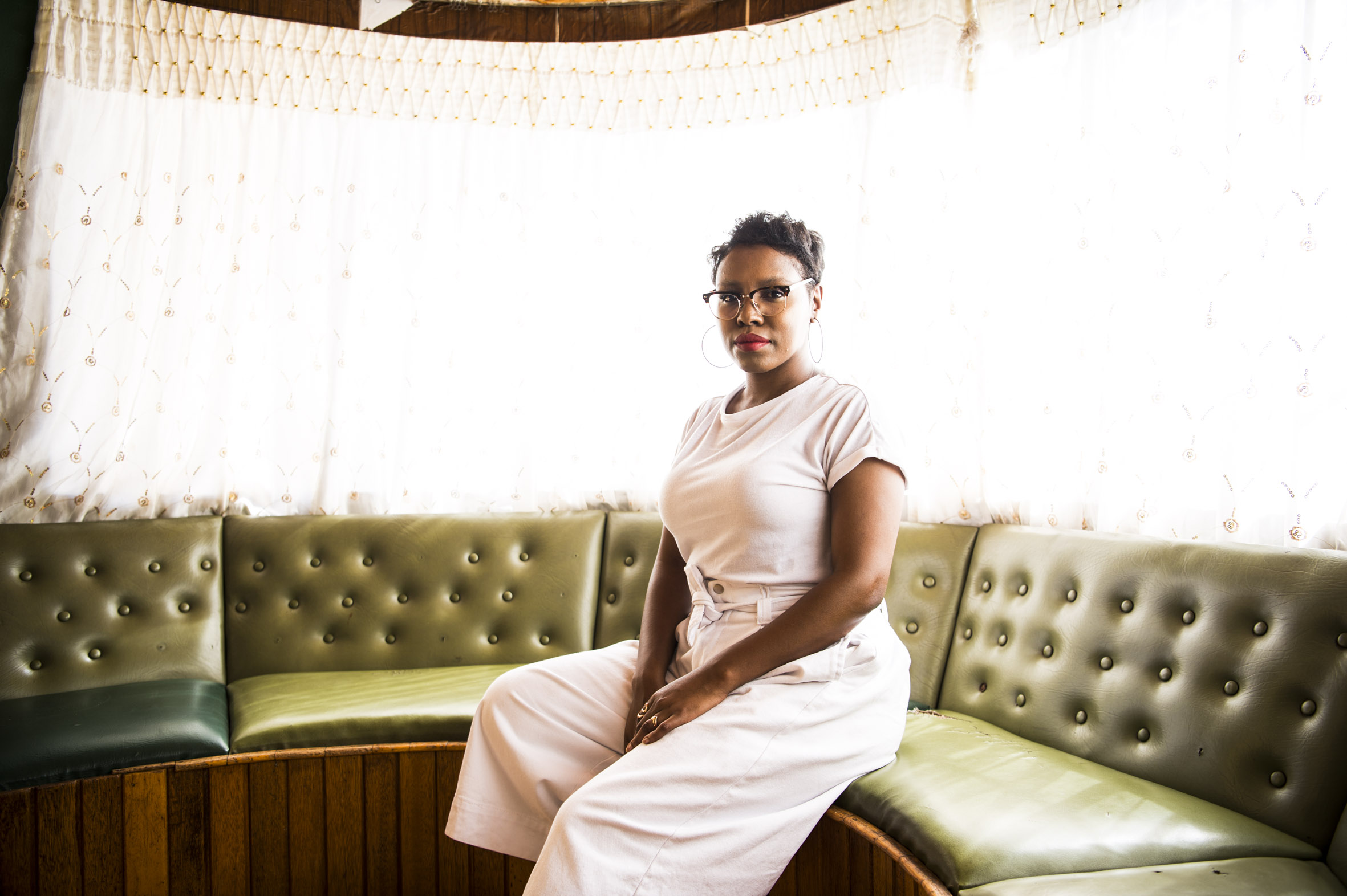Expression: Makeup artist Naledi Chucky Ramokgopa is making a living from doing makeup, which she regards as an art form. Photo: Delwyn Verasamy.
Long long ago — before our time of airbrushing photo apps, the flood of Instagram makeup tutorials on our timelines and selfies boasting a sun-kissed glow and sharp cheekbones powered by highlighter compacts — contouring makeup was an asset used only by performers on stage.
This makeup technique refers to the act of using makeup to enhance and chisel out certain facial features. By applying makeup that is a few shades darker than one’s skin under cheeks, along the sides of the nose and on the temples of the face, and blending it correctly, the technique is said to add depth to the face.
According to New York-based publication Allure, back in the 1500s, actors in England would outline their faces using chalk and soot (a black powdery substance) so their audience could clearly make out their facial expressions. Then under the conservative rule of Queen Victoria, in the 1800s, the trend grew to have negative connotations when it became popular among sex workers. Queen Victoria even went as far as declaring that makeup was vulgar.
But who cared? From on-stage performers and sex workers, the trend made its on-screen debut when actresses such as Audrey Hepburn, Marilyn Monroe and Elizabeth Taylor began incorporating the technique into their makeup for films.
And so the story goes and grows, leading us to the current era of filling makeup vanities with KKW Beauty contour sticks, Kylie Cosmetic lip kits, Fenty Beauty eyeshadow palettes and glue sticks.
As the range, reach and access ballooned, so did the antagonism. Today Queen Victoria’s stance on makeup has been replaced with hostility that ranges from social media trolls referring to its use as false advertising to think pieces that categorise its use as anti-feminist.
What these stances fail to acknowledge is the idea of makeup as an everyday, wearable artform that gives its users the agency to reimagine or express themselves.
In one of her videos, beauty Youtuber Sailor J. — who uses her makeup tutorials to subvert toxic beauty standards, colourism, patriarchy and politics — wittingly encapsulated the narrow notions around makeup. Titled Contouring 101, the video sees Sailor put on a fictitious character that exists in a world where makeup is a taboo, with the objective of luring in men. “Makeup is for women who want husbands… If men find out that we can rearrange the bones of our faces, we’re finished. We might as well pack our bags and go to the nunnery ’cause there will be nothing left for us here. Seeing that it has nothing to do with experimentation or artistry, since it’s simply for the dick, we have to do it,” she declares in an exaggerated old-timey voice.
“I took visual art in high school so I can argue that the makeup profession is an artform. In order to paint a portrait you need to get your colors right. A portrait captures a mood. Makeup works the same way. Also, they’re both about aesthetic pleasure,” says Pretoria-based makeup artist Naledi Ramokgopa (23) who has been doing makeup for the past two years.
On discovering that she can fulfil her insatiable impulse to fill canvas with colour, by perfecting the cut- crease makeup technique — using different eyeshadow shades to cut across the eyelid to create a contrast — she decided to pursue it as a profession.

Naledi Ramokgopa showcases her skill is evident on the face of one of her clients, Pheladi Madungandaba. Photos: Delwyn Verasamy
Similarly, Joburg-based makeup artist Palesa Mkhwanazi (30) sees the artistry in her profession but adds that it may not be viewed as such because of how attainable it is. “Every other art form needs talent or training to pursue and more money to consume. That’s what makes it so cool for me, how accessible it is,” says Mkhwanazi.
Mkhwanazi expands on the idea of “everyone being a makeup artist” — because of the access created by the price range in products and online tutorials — and acknowledges that it may restrict her clientele. But both she and Ramokgopa say they can live with this because their skill set gives them the upper hand. “You can be good at doing your own face but your technique may not translate on someone else,” says Mkhwanazi.
Ramokgopa, for example, begins with a skincare routine: she exfoliates the client’s skin and primes it using aloe vera or a poreless primer, depending on their skin type. “It’s like a clean canvas for me.” From there, she applies concealer and foundation using a sponge. This is followed by the baking technique where she adds powder over the makeup to set it in stone because “it gets rids of the different textures on the face and the makeup looks flat.”
The two makeup artists attest to the growing fixation toward makeup and say that, in spite of its diy element, the demand has sustained them as a nine-to-five gig would.
The founders of specialised makeup academy school of Makeup Artistry expand on the industry’s viability, saying it has low start-up costs. “All you need is a well-stocked makeup kit and a means of transport to travel from client to client. Freelance makeup artists need no office or studio space.” They go on to suggest that the growing desire to play with one’s features, influenced by the images we are bombarded with on social media, has made their industry “recession-proof, [so] business is booming”.
Mkhwanazi quit her day job to pursue makeup full time. For Ramokgopa, it’s her sole bread and butter until she completes her commerce qualification.

Palesa Mkhwanazi says the internet is creating renewed interest in makeup. Photo: Delwyn Verasamy.
From the research and conversations noted above, what seems to be significant about the use of makeup is its ability to showcase everyday users’ visual agency and expression. As Mkhwanazi puts it: “With where we are with social media, makeup sees everyday women innovating and setting trends. They’re no longer waiting on the magazines to tell them what’s in. It’s pretty dope to see them take ownership of how they want to look.”
However, with this expression comes the opportunity for people to think they can get away with problematic aesthetics that scream of appropriation or black face. Some of the trends include the use of bindis or makeup that mimics that which is used for the mexican day of the dead celebration and it can be seen in photo ops at festivals such as AfroPunk. There is also the recent blackfishing trend where white women made use of a bronzer and tanning lotions in order to appear black or mixed-race on social media.
So while we make our way to Dischem, Clicks, Sorbet, Mac stores or Dragon City to stock up on our facebeat tools — in the name of expressing ourselves — let it not be at the cultural expense of others.